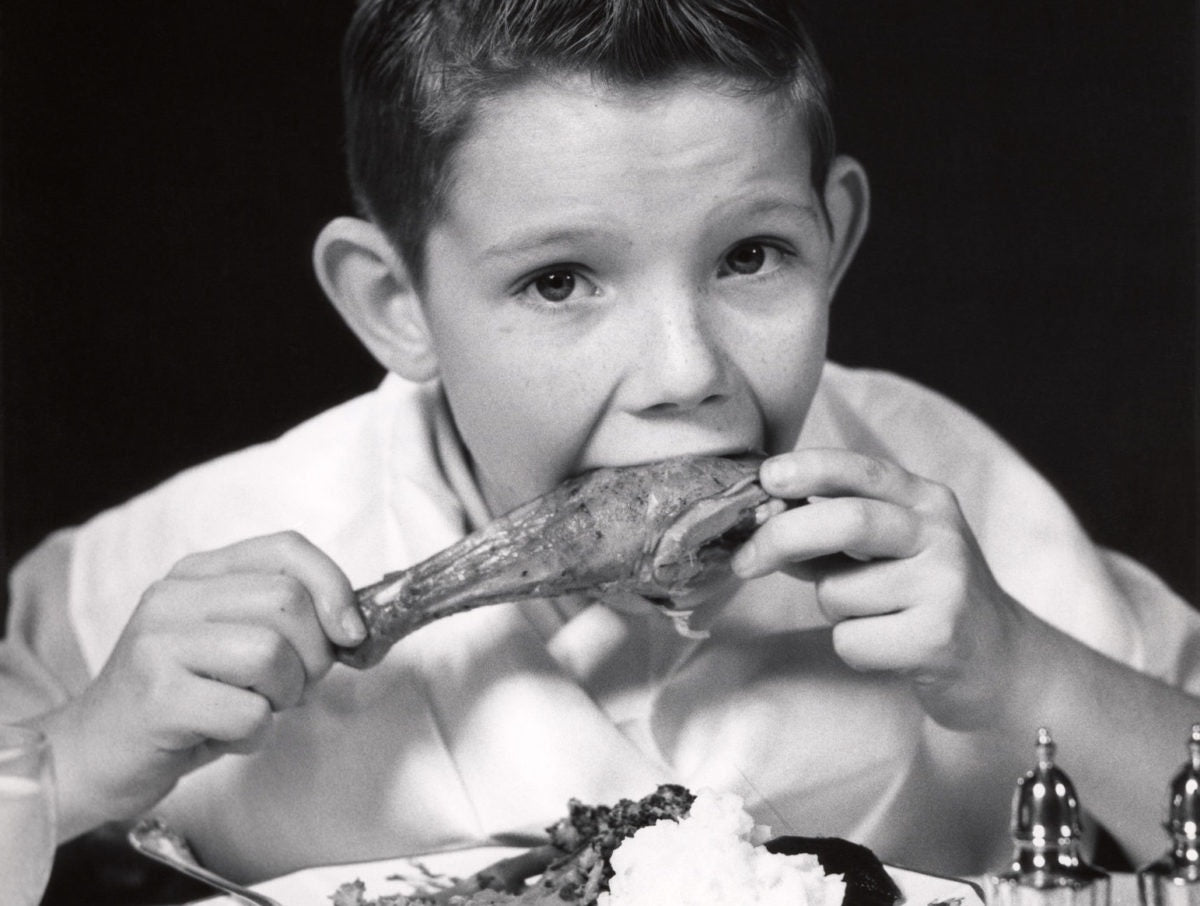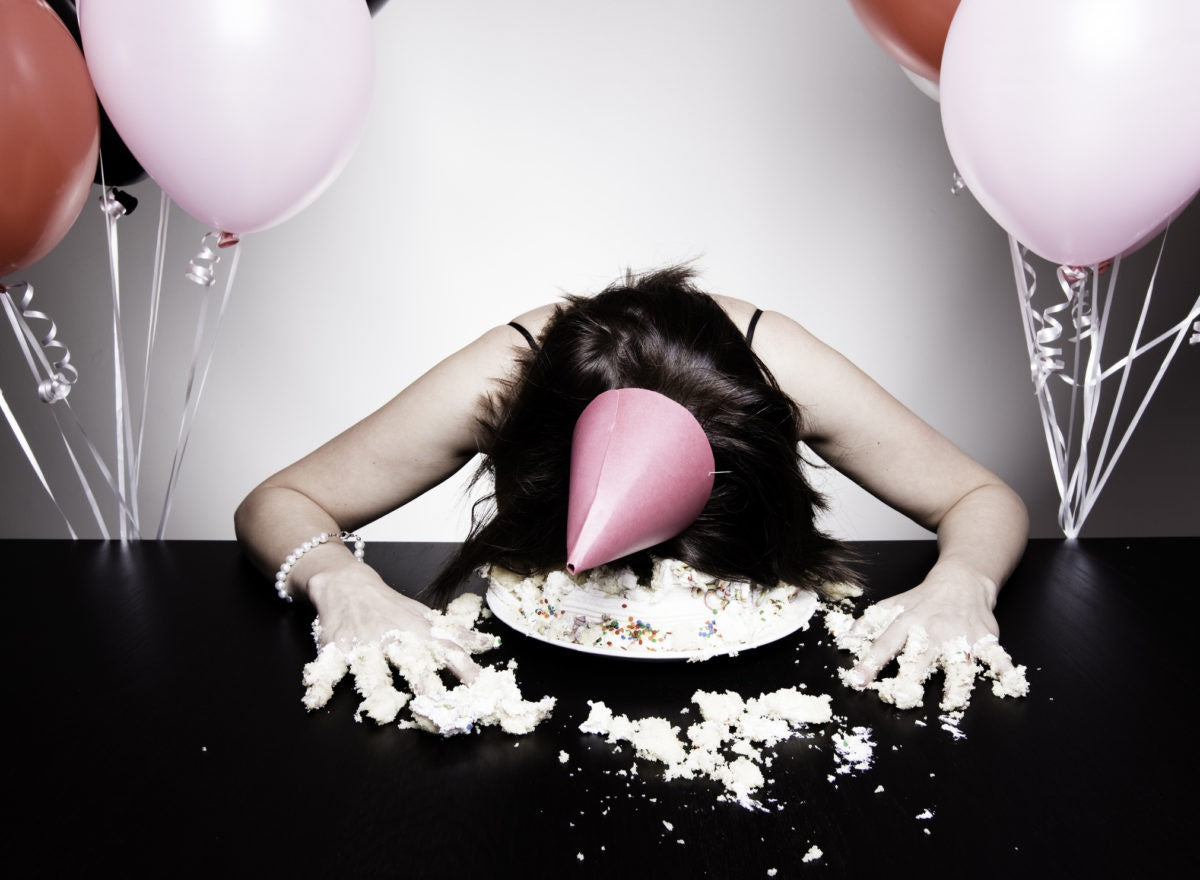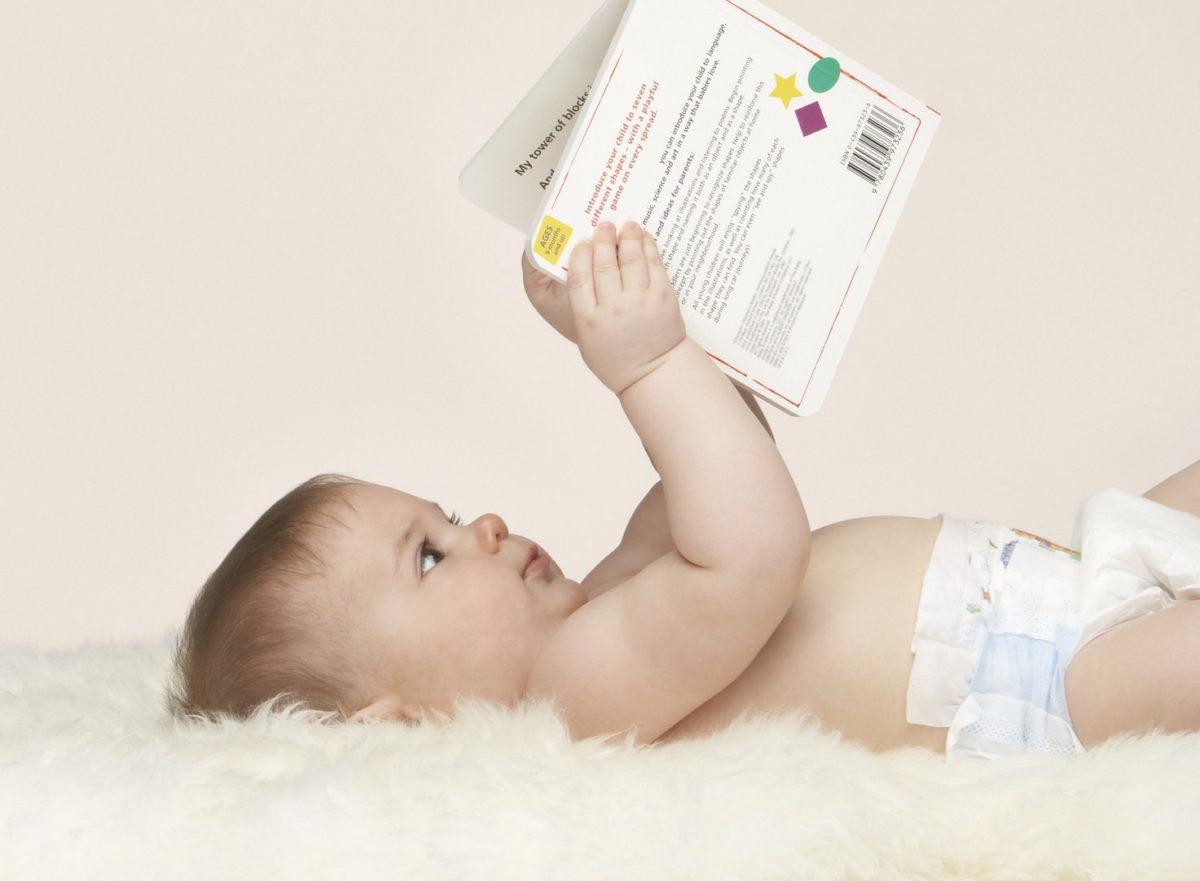The children's menu is nearly one century old. Michele Humes at Slate traces it to Prohibition. The dry laws implemented in 1920 meant that restaurants, which were used to upcharging on alcohol, had to drastically rethink their strategy. In an effort to accommodate more female diners, restaurants began writing menus for their children. The kids' menus then were as uniform as they are today, although the fare was much different. Most kid's menus, including the Waldorf Astoria's, offered a broiled lamb chop, which Humes calls "the chicken nugget of the Jazz Age." The chop, along with a complement of other bland offerings, was the healthiest food to feed children, according to the pediatric wisdom of the time. You can see bleak kid's menu offerings in menus throughout Prohibition, including some of those cataloged in the New York Public Library's expansive menu collection. The Cortile's Luncheon menu for March 27, 1933 included Chilled Apple Juice, Cream of Spinach Soup, a Parsley Potato, and, of course, a Broiled Lamp Chop.
Menus like The Cortile's represented the pediatric wisdom of the time that "wholesome" food made wholesome people. A tour through the dietary wisdom of the time demonstrates that although our menu offerings have changed, our approach to kid dining needs seasoning.
Boiled, mashed, bland
To understand this received wisdom, we need to travel back a few years to the 1907 edition of L. Emmett Holt's "The Care and Feeding of Children." The free, full-text version is well-worth the read, both for the striking similarities to modern parenting and the fascinating divergences. In some ways, Holt sounds much like a modern pediatrician. He is pro-nursing, firmly anti-bedsharing, and staunchly pro-vaccination. He writes to parents who note that smallpox is on the decline and wonder if vaccination is necessary: "It should by all means be done. It is only by the practice of general vaccination that small-pox is kept down." Other parts of Holt's text show their 110 years, including his entry for masturbation, "the most injurious of all the bad habits." Holt advises parents to be ever alert, and to help children overcome their baser impulses by rewarding their good behavior. That same mix of timeless and dated advice permeates the section on "The Diet of Older Children." Holt's dietary guidance for four- to 10-year-olds begins with the nutritional value of milk, eggs, and meat, making it not all that different from modern food guides. A closer look at Holt's advice reveals an interesting pattern. Although "no food that we possess has so high a nutritive value as milk," kids should never be given "the rich milk of a Jersey herd." Eggs are "a most valuable food," but "fried eggs should never be given and all omelets are objectionable." Many meats are forbidden, including "ham, bacon, sausage, pork, liver, kidney, game, and all dried and salted meats." Fried meat was out of the question. According to Holt, a child's first vegetable should be white potatoes (baked or boiled, never fried). Most green vegetables are okay from early age, as are carrots and beets, but other vegetables, like sweet potato and cauliflower, are best saved until a child is six or seven. Corn and eggplant are for even older kids, and under absolutely no circumstances should a child under 10 years of age be served a salad. Holt asserts that vegetables can cause digestive trouble, but that is not the fault of the ingredient but its preparer: "It is, in fact, almost impossible to cook them too much; they should also be very finely mashed." Given his attitudes about the dangers of raw vegetables, it's not difficult to imagine where Holt came down on sweets: "A stale lady-finger or piece of sponge cake is about as far in the matter of cakes as it is wise to go with children up to seven or eight years old." Holt's low-fat, low-taste diet goes generally unsourced. Humes hypothesizes that "although he stopped short of saying what it was that was so inherently great about the plain ones," Holt saw "moral danger in sensual pleasure, and damnation in indulgence."
You are what you eat
Holt wasn't the only believer. His advice has roots in medical practitioners concerned with people's moral failings, one of whom was much more explicit about the role of food in curbing people's basest impulses. In "Plain Facts for the Old and Young: Embracing the Natural History and Hygiene of Organic Life," which was first printed in 1877, J. H. Kellogg chronicles the moral failings of the time. He devotes an enormous portion of the work to the "solitary vice" of masturbation (which he contrasts with partnered, "social" vice). Kellogg lists among its causes all of the usual suspects: "sexual precocity, idleness, pernicious literature." Kellogg also includes "exciting and irritating food," which was thought to cause erections, "amorous and exotic thoughts" (which also caused erections), and sleep disturbances (which created idle time that led to amorous and exotic thoughts which caused erections). Children with adventurous palettes were imagined to have equally voracious sexual appetites: "A boy or girl who is constantly eating cloves or cinnamon, or who will eat salt in quantities without other food, gives good occasion for suspicion." For Kellogg, spicy food made spicy people. Bland food made moral citizens. Kellogg's solution to the problem of solitary vice was to feed children a diet of "wholesome and unstimulating food." Kellogg developed these ideas while working as the superintendent at the Western Health Reform Institute. When the institute burned down, it was rebuilt as the Battle Creek Sanitarium. There Kellogg set to work making the kinds of wholesome and unstimulating foods he argued for in his book, including granola and – as you've probably guessed given his name – Corn Flakes.
Spicing up the menu
The medicalization of kids' menus makes it a bit easier to understand the dishes on offer then, but also now. In some ways, the menu hasn't changed much. Kids' meals are still often separate from the adult offerings. Although there isn't much "wholesome" about burgers, hot dogs, chicken nuggets, macaroni and cheese, and pizza, the main offerings are, like their originators, still beige, and still largely non-vegetable. In the 20s and 30s kids were served bland food because adults wanted to keep them pure. Although the menu items we offer them now are much different, they're still clearly delineated as "kids" food. None of the food poses a challenge. Kids aren't encouraged to try anything new. They aren't even encouraged to try flatware: four of the five most popular options can be eaten without it. By giving kids all this bland food, we are producing bland people. Now that we're not concerned about a slippery slope from raw vegetables or cinnamon to sexual depravity, perhaps it's time to make kid food stimulating again. Jeffrey M. Barker of The Takeout notes how insulted adult diners would be to receive a menu titled "for troglodytes with unrefined palates." Such a menu would defy one main reason for dining out. "Going out to eat is supposed to be fun." Barker writes. "It should be a treat, an adventure." One way to regain that sense of adventure stems from another byproduct of Prohibition: the speakeasy. Let's just tell the kids that they cannot, under any circumstances, order off the grown-up menu. Not even if they're really hungry. Not even if the food sounds delicious. Not even if we leave the table to go to the bathroom. Might they wave the server over and in conspiratorial tones ask for the chicken makhani? The pad thai? The pesto flatbread?



